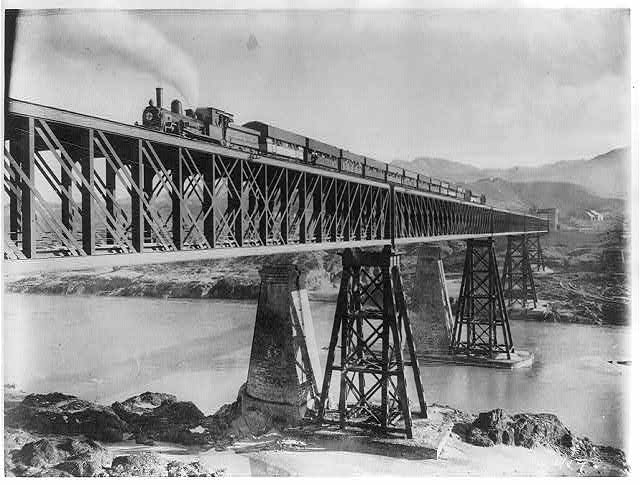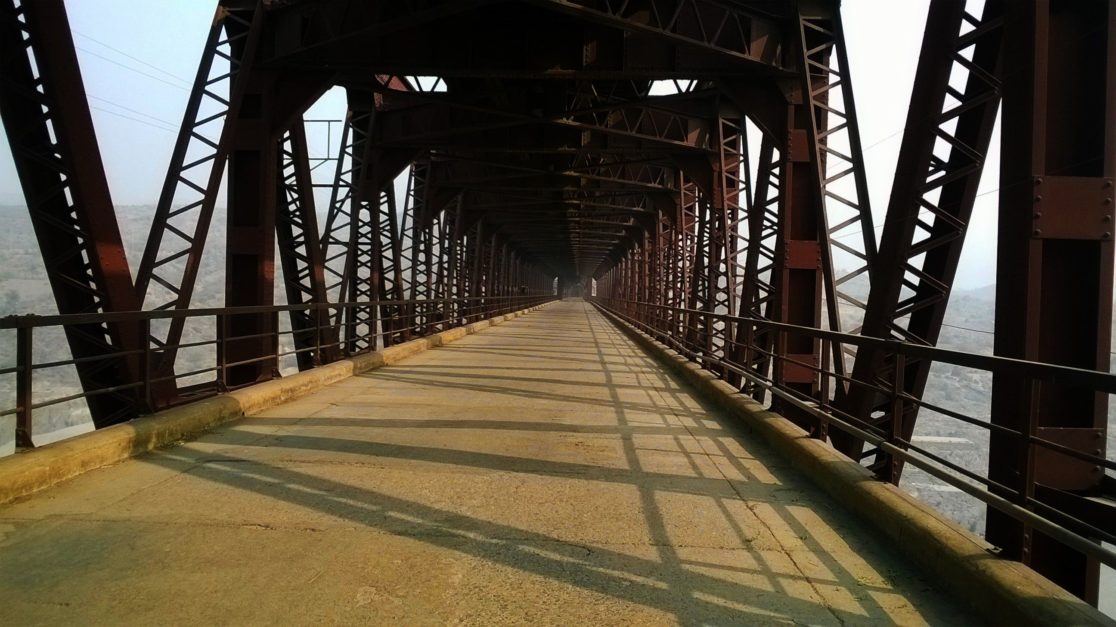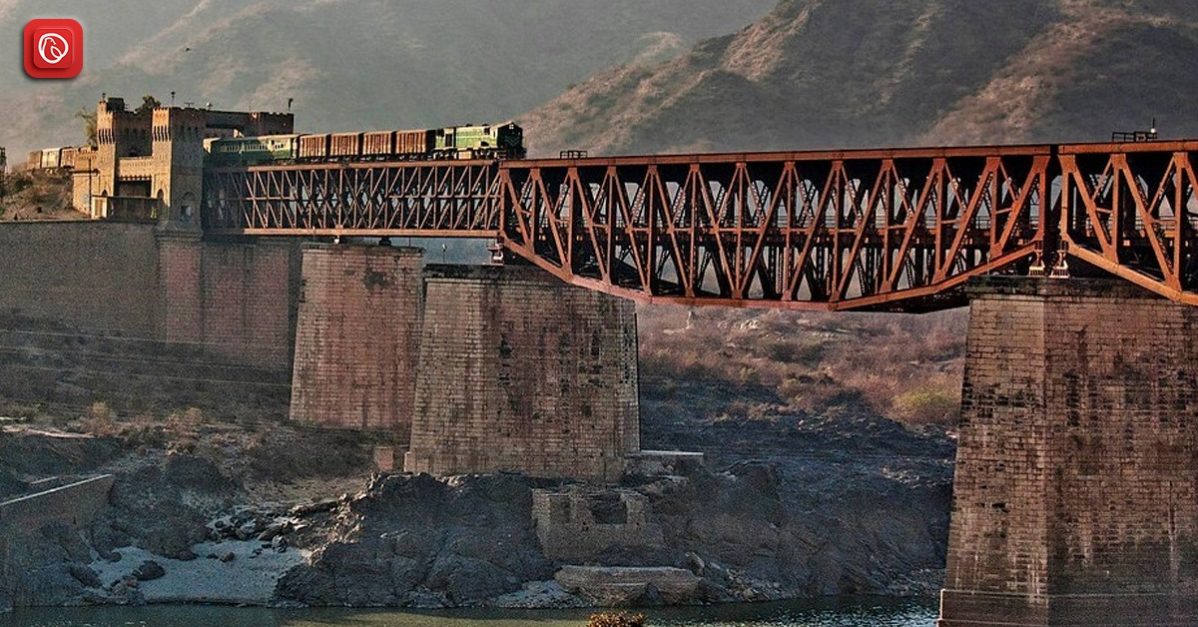Attock Bridge, popularly known as the Jhika Gali Bridge, is a remarkable engineering marvel spanning the River Indus at Attock. The bridge has played a vital role in connecting the North-West Frontier Province (now Khyber Pakhtunkhwa) with Punjab and the rest of the country.
Graana.com will look closer at the Attock Bridge, its history, design, construction, and significance.
History

The Attock Bridge’s history dates back to the British colonial era when the North-West Frontier Province was part of British India. The British government recognised the strategic importance of the province and its location at the crossroads of Central Asia, South Asia, and the Middle East. The British government decided to build a bridge across the River Indus to establish its authority over the province and maintain control over the region.
The construction of the bridge began in 1887 and was completed in 1893. The bridge was designed by Sir Guilford Lindsey Molesworth, a British civil engineer. Whereas, the British Indian Public Works Department built it.
Design and Construction

The Attock Bridge is a steel truss bridge spanning the River Indus at Attock. The bridge is 1,710 feet long and 150 feet above the river’s water level. The bridge’s design is a thru truss with a Pratt truss on the approach spans and a Warren truss on the main span. The bridge has 26 spans, with the main span being 312 feet long.
The bridge’s construction was a massive undertaking, given the harsh terrain, extreme weather conditions, and the absence of modern construction equipment. The construction was done manually, with thousands of labourers working day and night to complete the project. The bridge’s construction involved over 5,000 tons of steel, 7,500 cubic yards of masonry, and 56,000 cubic yards of concrete.
Significance
The Attock Bridge holds immense historical importance and has witnessed many significant events in the country’s history. During the British colonial era, the bridge was vital in connecting the North-West Frontier Province with Punjab and the rest of the country. The bridge facilitated the movement of troops, goods, and supplies and enabled the British government to maintain its control over the region.
During the 1965 war between Pakistan and India, the Attock Bridge played a critical role in enabling the movement of troops and equipment. The bridge’s strategic location made it a target for Indian airstrikes and it suffered considerable damage during the war.
Despite the damage, the bridge was quickly repaired and remained operational. In 1973, the bridge underwent a major renovation, which involved the replacement of its wooden deck with a new steel deck. The renovation work was done by the Pakistan Army Engineering Corps and was completed in a record time of six months.
Today, the Attock Bridge plays a vital role in connecting the Khyber Pakhtunkhwa with Punjab and the rest of the country. The bridge is a lifeline for the region’s people, enabling the movement of goods, supplies, and people. The bridge is also essential to the country’s transportation network and connects Pakistan’s northern and southern regions.
Challenges Faced
The construction of the Attock Bridge was not without its challenges. The harsh terrain, extreme weather conditions, and the absence of modern construction equipment made the construction work extremely challenging. The bridge was built when construction technology was in its infancy, and manual labour was the only available option.
The region’s extreme weather conditions made the construction work challenging. The summers are scorching, with temperatures soaring up to 50 degrees Celsius. The winters are bitterly cold, with temperatures dropping below freezing point. The construction workers had to endure these harsh weather conditions, which made the work more difficult.
Another significant challenge faced during the bridge’s construction was the absence of modern construction equipment. The construction work was done manually, with the workers using essential tools and techniques. The heavy steel girders had to be manually transported from the railway station to the construction site. The workers had to use ropes and pulleys to lift the heavy girders and assemble them on-site.
Despite these challenges, the construction work progressed steadily, and the bridge was completed within six years. The completion of the bridge was a significant achievement in the history of civil engineering. It is also a testament to the determination and perseverance of the workers involved in the project.
Impact on the Region
The Attock Bridge, also known as Jhika Gali Bridge, has had a profound effect on the region, both in terms of its economic and strategic significance. The bridge has facilitated the movement of goods, supplies, and people between Khyber Pakhtunkhwa and Punjab, enabling trade and commerce to flourish in the region.
The bridge has also played a crucial role in connecting Pakistan’s northern and southern areas, enabling the movement of troops and equipment during times of war and peace. The bridge’s strategic location has made it a target for enemy attacks during times of conflict and has suffered damage on several occasions.
In conclusion, the Attock Bridge is a remarkable engineering feat that has played a crucial role in connecting Pakistan’s northern and southern parts. The bridge has been serving the country for over a century.
It facilitates transportation and trade and contributes to the region’s economic development. Its historical significance, as the site of important military events and the setting of memorable moments in Pakistan’s history, has made it a symbol of national pride.
The Attock Bridge remains an essential infrastructure for the country’s future growth. Additionally, its continued maintenance and preservation are necessary to ensure its longevity and significance for generations to come.
To know about other types of bridges, visit Graana Blog.




